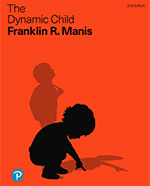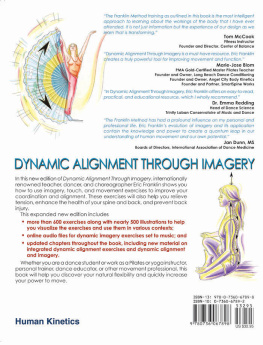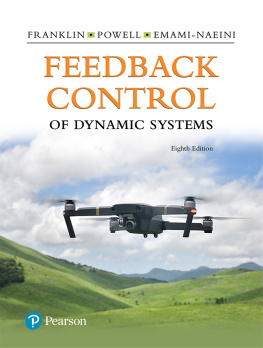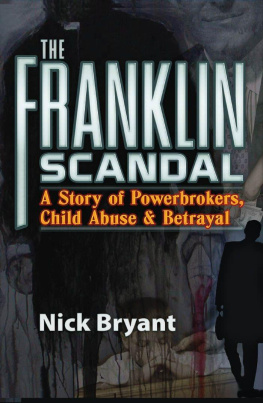Franklin R. Manis - The Dynamic Child
Here you can read online Franklin R. Manis - The Dynamic Child full text of the book (entire story) in english for free. Download pdf and epub, get meaning, cover and reviews about this ebook. publisher: Pearson, genre: Children. Description of the work, (preface) as well as reviews are available. Best literature library LitArk.com created for fans of good reading and offers a wide selection of genres:
Romance novel
Science fiction
Adventure
Detective
Science
History
Home and family
Prose
Art
Politics
Computer
Non-fiction
Religion
Business
Children
Humor
Choose a favorite category and find really read worthwhile books. Enjoy immersion in the world of imagination, feel the emotions of the characters or learn something new for yourself, make an fascinating discovery.
- Book:The Dynamic Child
- Author:
- Publisher:Pearson
- Genre:
- Rating:4 / 5
- Favourites:Add to favourites
- Your mark:
- 80
- 1
- 2
- 3
- 4
- 5
The Dynamic Child: summary, description and annotation
We offer to read an annotation, description, summary or preface (depends on what the author of the book "The Dynamic Child" wrote himself). If you haven't found the necessary information about the book — write in the comments, we will try to find it.
The Dynamic Child — read online for free the complete book (whole text) full work
Below is the text of the book, divided by pages. System saving the place of the last page read, allows you to conveniently read the book "The Dynamic Child" online for free, without having to search again every time where you left off. Put a bookmark, and you can go to the page where you finished reading at any time.
Font size:
Interval:
Bookmark:

Pearson Education
Listen to the Audio
I hear and I forget. I see and I remember. I do and I understand.
Confucius ~500 BC
Students learn by doing. This notion has long been at the heart of my teaching philosophy, and it is the foundation on which The Dynamic Child was built. The origins of this immersive learning experience go back to 2003, when after more than two decades of teaching the introductory course on child and adolescent development, I realized that I wanted my students to gain a more comprehensive exposure to children. I was having difficulty arranging access for my students to children in their natural environments, and my students' schedules also seemed to be tightening. I began thinking of ways to address this problem.
One day, standing in a grocery store, I saw a teenage girl carrying an electronic baby doll, of the kind high schools used to let adolescents experience what it is like to have a baby for a day or two as part of a health or life skills unit. I had a flash of insightWhy not have students raise a virtual baby online? They would read descriptions of child behavior and face issues parents typically face. Their decisions as parents would subtly shape the child's development in combination with other factors that influence a growing child. I consulted with a computer scientist, Mike Radford, who assured me that such an interactive program could be created. The two of us, along with some graduate students, set to work with some seed money from my university. In 2005, My Virtual Child was born.
What is it like to raise a virtual child? Students log on and indicate their gender and the gender of their partner. They are told the gender of their virtual baby, whom they get to name, and they make choices about how the child will look. Students also fill out a brief questionnaire about themselves, and the responses are used to construct a virtual child who somewhat resembles them physically, but, more importantly, resembles them in terms of personality and cognitive ability. Each child's story is told through vignettes, accompanied by images of the child as she or he gets older. Each child shows typical developmental milestones but also develops along a particular path according to the child's unique genetic profile, the parenting choices students make, and random environmental events. As the child develops, students are prompted in the program to analyze and write about their child's behavior using concepts from developmental psychology.
After several years of using My Virtual Child in class and hearing feedback from many students and college instructors who used it, the editors at Pearson and I decided it was time to expand beyond the experiential aspect of raising a virtual child to write a rich, research-driven narrative that would be directly integrated with My Virtual Child. The Dynamic Child was conceptualized, created, and ultimately built from the ground up as a digital experience for students in Pearson's Revel platform. This unique digital program allows students to raise their virtual child, read the core narrative, watch dynamic and exciting videos, and engage with interactive content and assessments in one continuous learning experience.
Listen to the Audio
When students are engaged deeply, they learn more effectively and perform better in their courses. This finding from psychological studies of learners, also reflected in the wisdom of Confucius quoted at the beginning of this preface, inspired the creation of Revel.
Revel is an interactive learning environment that deeply engages students and prepares them for class. Media and assessment integrated directly within the authors' narrative lets students read, explore interactive content, and practice in one continuous learning path. Thanks to the dynamic reading experience in Revel, students come to class prepared to discuss, apply, and learn from instructors and from each other.
Learn more about Revel
www.pearson.com/revel
The Dynamic Child begins with chapters on theories and methods ( Chapter ), genes and environment ( Chapter ), and prenatal development and birth ( Chapter ). After that, the material is organized chronologically, with chapters on physical development and health, cognitive development, and socioemotional development at each of four developmental periods: infancy, early childhood, middle childhood, and adolescence ( Chapters ). The chapters are all organized around learning objectives that are closely aligned with assessment. Throughout, there is coverage of classic studies and theories as well as recent research studies, theories, and applications that are pushing the boundaries of the field forward. All of this content is integrated with My Virtual Child and delivered in Revel.
Frank Manis Discusses The Dynamic Child and My Virtual Child Integration
The Dynamic Child and My Virtual Child are seamlessly integrated in Revelstudents are able to raise their child directly in the platform without ever having to open new windows, enter additional sign-in credentials, or leave the platform. As students begin reading about a new period of development in The Dynamic Child (infancy, early childhood, middle childhood, or adolescence), they are prompted to raise their virtual children through that age level and to think about how the development of their virtual children ties into the content of each chapter. However, instructors have flexibility as to when they assign My Virtual Child in Revel. Instructors can access the My Virtual Child Assignments for each age group via the assignment tab in Revel, and can determine when in the content experience they would like their students to raise their children.
In my own course, I instruct my students to raise their virtual children first, before they dive into the chapters in a unit, a strategy that is grounded in anchored instruction. Anchored instruction involves the use of anchor material or media to create a shared experience among learners and a beginning point for further learning on a topic (Bransford et al., 1990). Research from the field of educational psychology suggests that there are important benefits associated with putting experiential learning activities first, before learners are exposed to core concepts, theories, and research. Beginning with experiential learning activates relevant existing knowledge students have on a given topic, incites their curiosity, and prepares them for additional learning that will follow.
Many instructors who have used My Virtual Child report that students become highly engaged (at an intellectual and emotional level) as they raise their virtual children and are motivated to answer questions about their children that make use of information from course materials and class presentations. This is analogous to the desire of real parents to understand, explain, and guide their own children's behavior. I also find that the experience of having students raise their virtual children before reading the chapters replicates real-world parenting. Most parents don't sit down and read about the scientific underpinnings of child development before they make parenting decisionsthey usually do what feels right in the moment! In this way, we minimize situations in which students feel they are supposed to raise their virtual children in the right or correct way.
Font size:
Interval:
Bookmark:
Similar books «The Dynamic Child»
Look at similar books to The Dynamic Child. We have selected literature similar in name and meaning in the hope of providing readers with more options to find new, interesting, not yet read works.
Discussion, reviews of the book The Dynamic Child and just readers' own opinions. Leave your comments, write what you think about the work, its meaning or the main characters. Specify what exactly you liked and what you didn't like, and why you think so.












